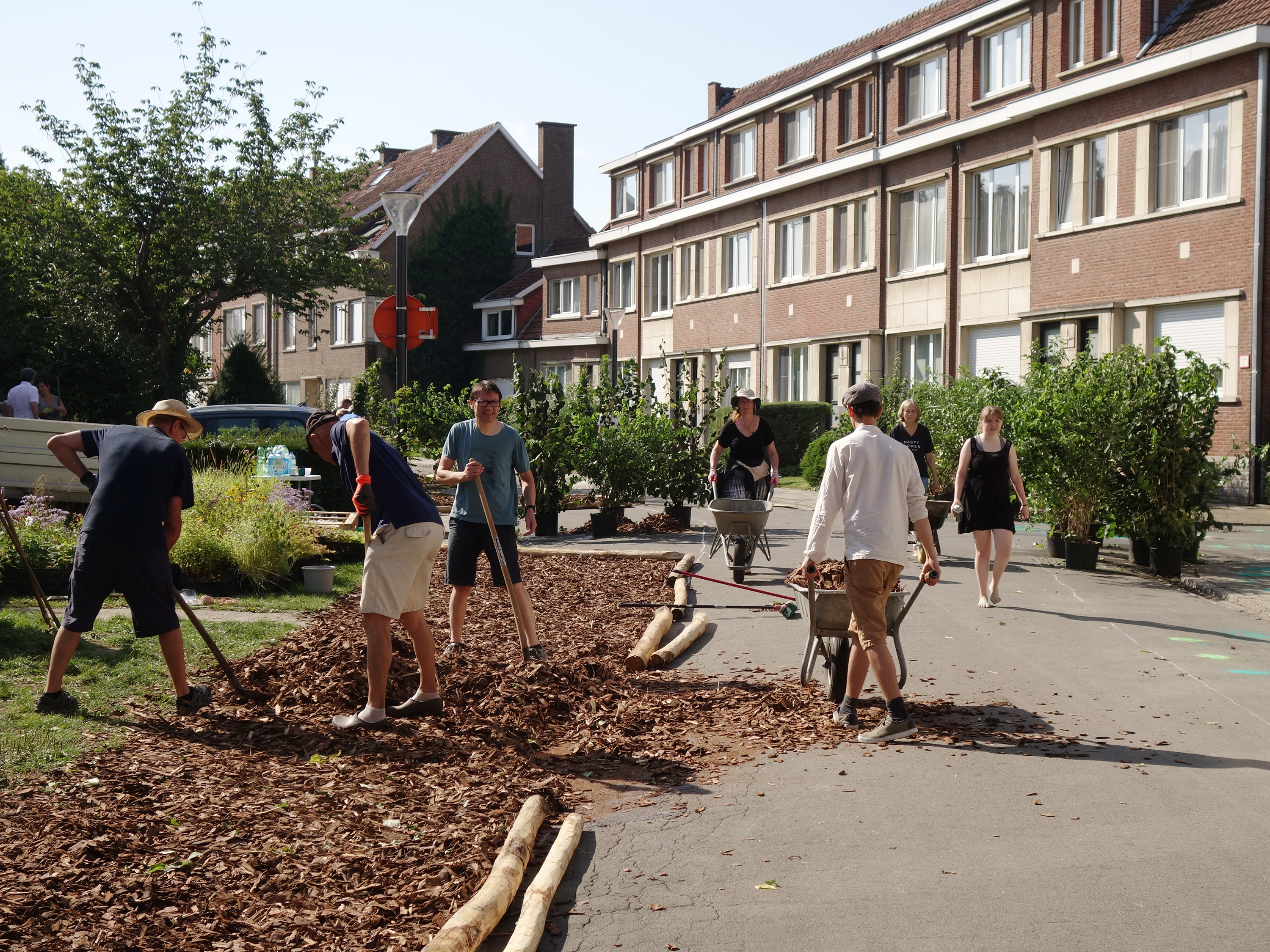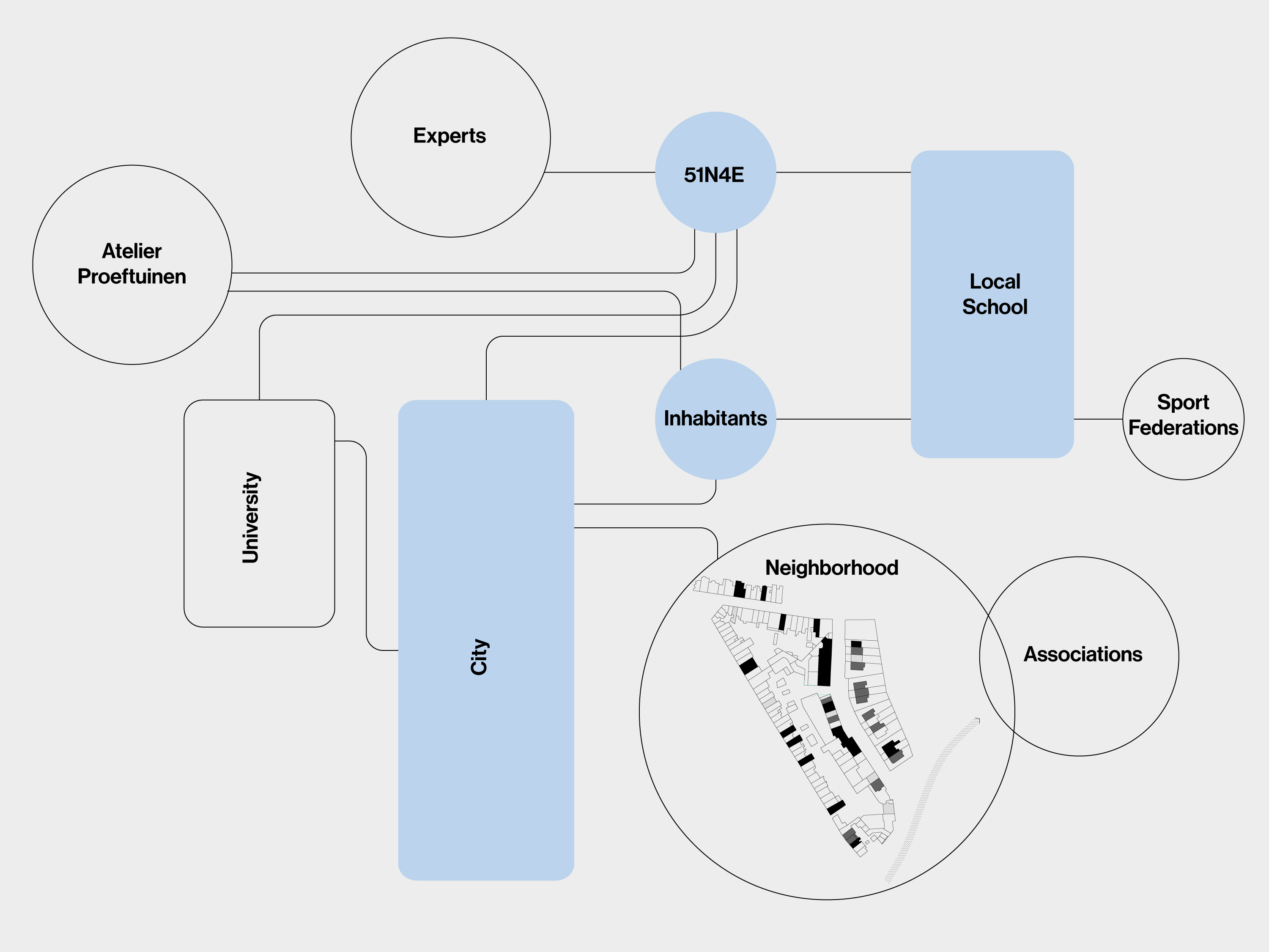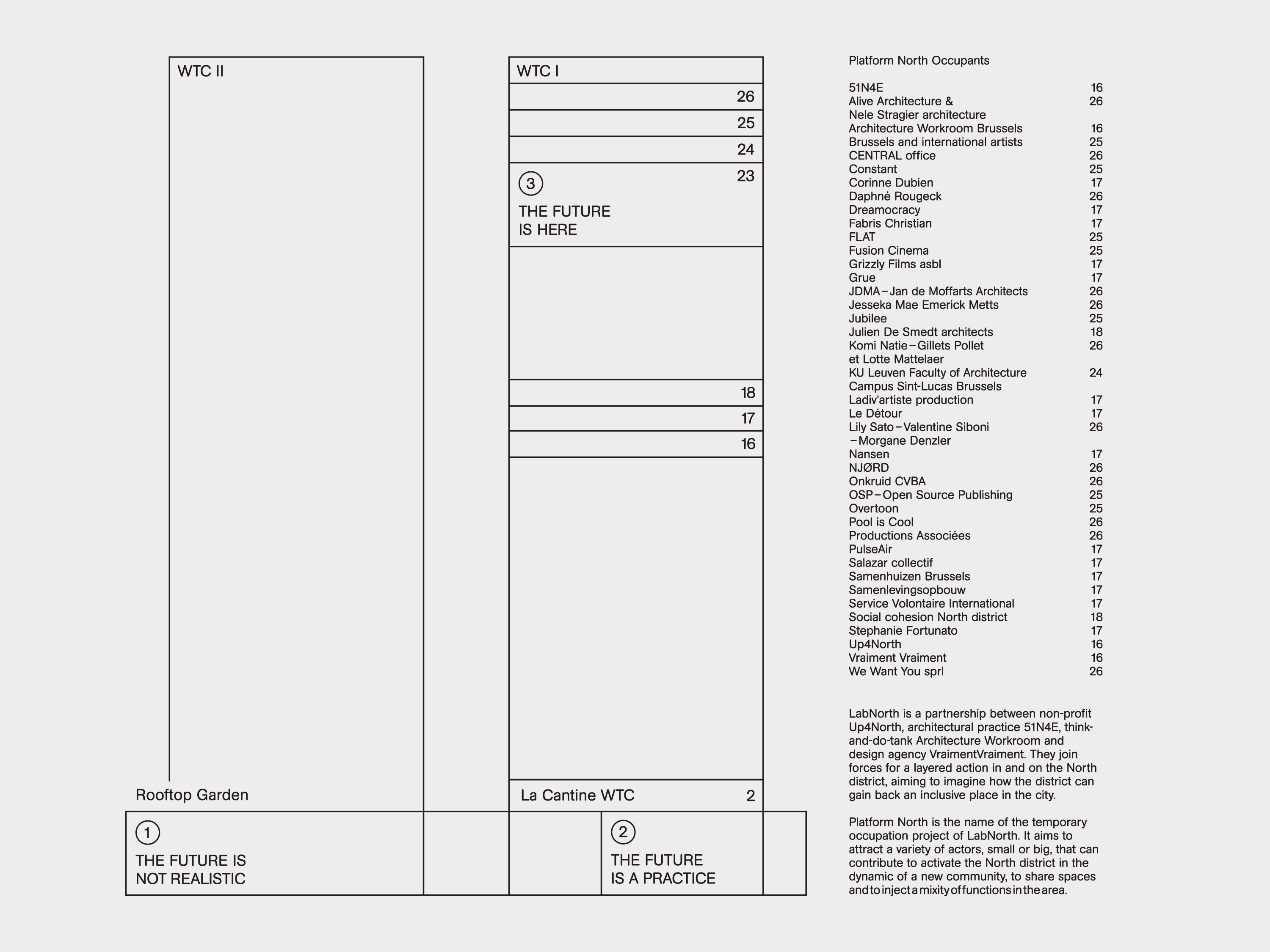


The Flanders region can be characterized by an abundance of road infrastructure. Recently, the government issued a call for 'demineralization' projects. We accompany a citizens’ initiative in Leuven in the transformation of their street from an environment characterized by concrete to a biodiverse landscape with water-permeable surfaces. During car-free Sunday, we gathered with the neighbours on the street and pre-configured this new reality.

Can meanwhile use be an act of resistance affecting the further course of urban redevelopment? More specifically, can it influence and inform the choices of citizens, policymakers, architects and developers in such projects?
Dieter Leyssen,
'Meanwhile Use as an Act of Resistance', 2018


















































